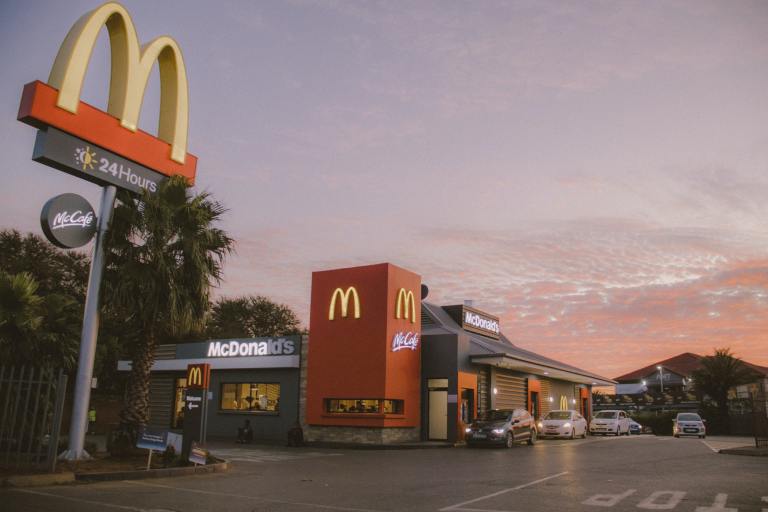Despite The Stereotypes, America Is A Nation Of Hunger
This is a new historical moment, but not a unique one. Hunger is central to many pivotal moments in American history.
By ![]() Chloe Angyal
Chloe Angyal

By the start of March, gyms across America are still clogged with newly energized resolution-makers — though somewhat less clogged than in February, and even less so than in January. Around the country, stomachs still rumble, denied chocolate or carbs or whatever food we’ve decided will help us lose “those last ten pounds.” By the end of the month, the promises will be broken, only to be renewed later in the spring, once the panic about the approach of summer and “bikini season” sets in. Every year, Americans pay, collectively, over a billion dollars to go hungry — for tailored meal plans and appetite suppressants and other weight loss products. On the elliptical machine, women read glossy magazines full of hyper-thin models and gossip magazines peopled by slight and slender actresses, who are airbrushed to look even smaller than they are, and whose every minute weight loss and gain is congratulated or critiqued in the press. For many people, “you’ve lost weight!” is a compliment, one that justifies that gnawing in your gut.
Walking among the voluntarily hungry are those who go hungry by no choice or fault of their own. The draconian cuts to welfare programs in the last year, combined with still-high unemployment and under employment, have left more than 50 million Americans food insecure, struggling to feed themselves and their families. Last year’s “hunger cliff” cuts to SNAP benefits ate away at the already-insufficient food budgets of 47 million people. In the recent, gut-wrenching documentary A Place At The Table, we met Rosie, a Colorado fifth-grader whose family relies on food banks (which, due to staggering demand, have multiplied in recent years, from 200 in 1980 to 40, 000 today). There, they receive food that, largely thanks to government policy, is the cheapest kind in America: highly processed, and full of sugar, salt, and fat.
I saw Colicchio’s documentary when it came out in 2012. My stomach growled through the entire screening, not because I couldn’t afford to eat, and not because I was on a diet. I was hungry for a different reason. After surviving all-girls high school, elite gymnastics, and competitive dance virtually unscathed by eating disorder, I found myself, in my early twenties, living a blend of starving, bingeing, and purging then known as ED-NOS — Eating Disorder Not Otherwise Specified. I wasn’t alone: 20 million American women and 10 million American men will suffer from a clinically significant eating disorder in their lifetime, and the numbers are continually climbing.
And then there are the hunger strikers. From Guantanamo Bay to Washington, D.C., where immigration reform activists recently staged a lengthy and well-publicized hunger strike, going without food is an increasingly common strategy to win the support of the American people and change the policies of the American government.
Take all these empty bellies together, and it seems clear that hunger has become a defining element of American life in this particular historical moment. Whether it is voluntary or involuntary, pathological or political — none of these identical, much less equivalent — hunger warps the lives of virtually every American today. We are a nation of hungry people.
This is a new historical moment, but not a unique one. Hunger is central to many pivotal moments in American history. It is essential to our foundational mythology: after all, without hungry pilgrims, there would be no Thanksgiving. [In many ways, the hunger of the Great Depression defined America in the first half of the twentieth century.] And the memory of that hunger – and particularly, the powerful image of the breadline – shaped our collective reaction to the economic crises of the 1970s, 1980s, and the global financial crisis.
But this moment is different: when in recent history have so many Americans been hungry, and for so many disparate reasons?
What does it mean for us to be hungry on such a grand scale? The physiological effects of hunger are established and myriad; inadequate nutrition stunts the physical and cognitive development of children, and reduces our resistance to disease. Dieting, in addition to turning you into one of those boring people who can only talk about their diet, makes long-term weight loss and weight maintenance difficult; 95% of dieters will gain back the weight they lose, and then some. Anorexia nervosa has a higher death risk than any other mental illness. Hunger striking can be politically effective, but the toll it takes on the body is severe.
This confluence of hungers raises yet more daunting questions about want and plenty, about what it means to be voluntarily hungry when so many of your fellow citizens are at the mercy of structures and policies that leave them ravenous. About why millions of Americans are afflicted with the kind of unhappiness that expresses itself in self-starvation. About what it means to go hungry at a time of unprecedented American wealth and agricultural efficiency. About the medical implications – and the metaphorical ones — of eating calorie-dense food, but feeling hungrier and unhealthier for it. Hunger is a powerful kind of emptiness. Hunger is a powerful kind of emptiness, and as hunger strikers demonstrate, it can sometimes be transformed into a form of power itself. But more often than not, it leaves us weakened — physically, psychologically, spiritually, and politically.
As they tell you over and over during treatment for an eating disorder, there are no easy answers, no simple solutions. In treatment, they also tell you that an eating disorder isn’t really about food, or at least, not only about food. The same is true here. It’s not just about how Americans eat, or how they don’t. The real question is how to sate our hunger, literal and otherwise. How do we nourish ourselves, and the people we love, and the culture we live in? How do we fill the emptiness? ![]()




